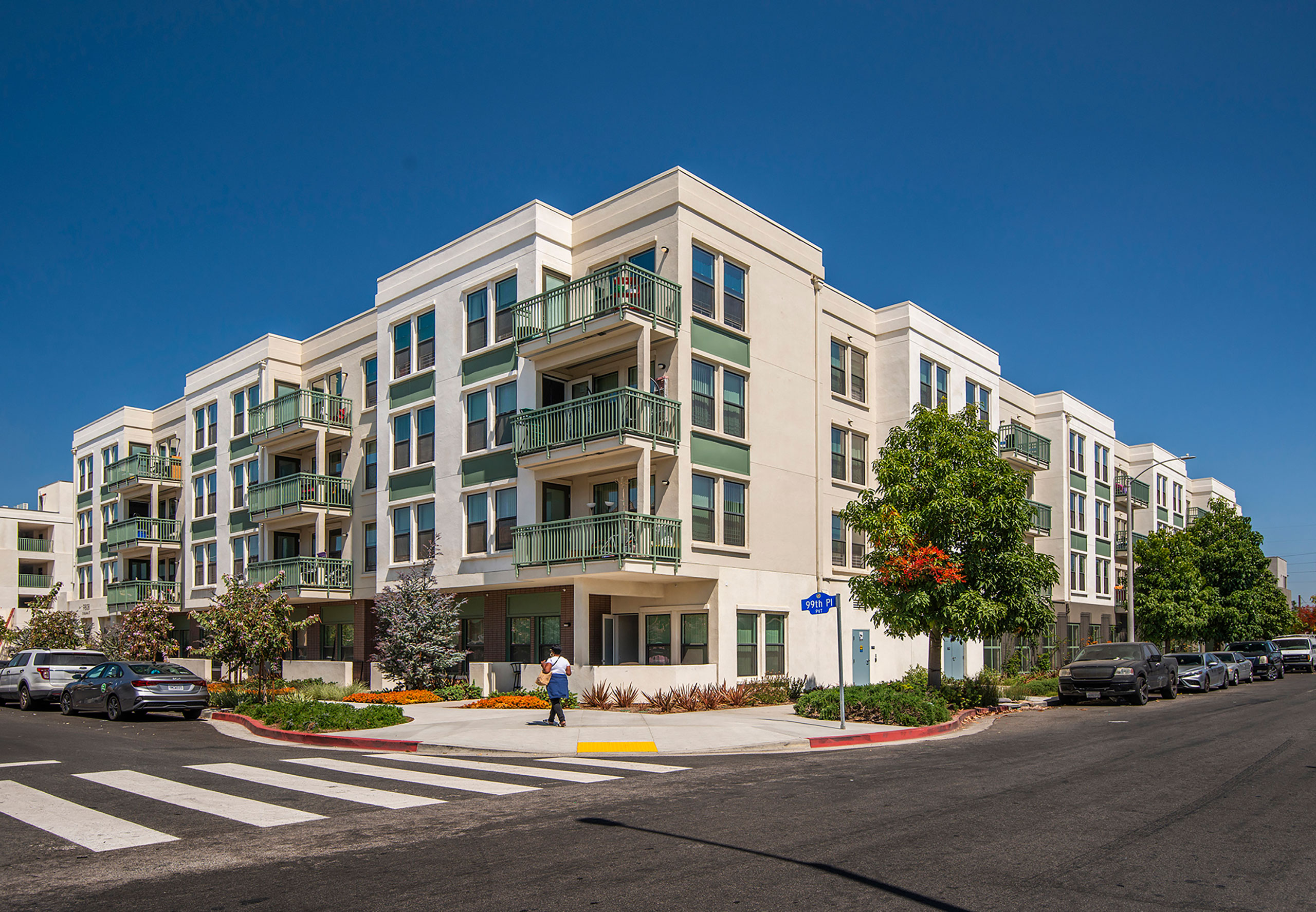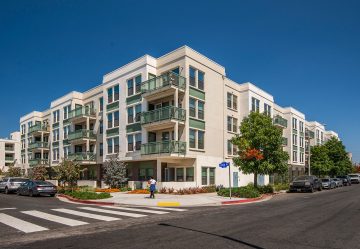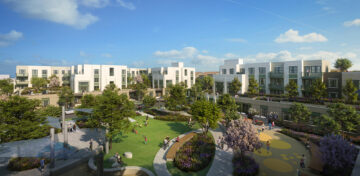 Kalmia Rose, a mixed-use, mixed-income community in the Watts neighborhood of Los Angeles, built on the site of the Jordan Downs public housing project of the 1950s. | John Bare Photography courtesy of KTGY
Kalmia Rose, a mixed-use, mixed-income community in the Watts neighborhood of Los Angeles, built on the site of the Jordan Downs public housing project of the 1950s. | John Bare Photography courtesy of KTGY
The Housing Act of 1949 earmarked funding for slum clearance and the “urban renewal” intended to replace blighted city enclaves. Unfortunately, early efforts at creating public housing were marred by lack of foresight, poorly conceived architectural design, systemic racial segregation, insufficient funding for upkeep and lack of access to urban amenities.
Jordan Downs, a community built in the Watts district of Los Angeles in the 1940s to house war workers and converted to public housing in the 1950s, endured a number of these woes and a few others distinctly its own. The project suffered from such serious disinvestment that by the late 1990s it stood in dire need of updating. In addition, the soil was found to be contaminated with lead, arsenic and other chemicals, a legacy of industrial use prior to the community being developed. The city’s plans to redevelop the land drew protests by activists concerned about safety issues arising during demolition.
Addressing a number of problems endemic to mid-century public housing represented a primary mission of the entities that created Kalmia Rose at Jordan Downs. A new housing development transforming a portion of Jordan Downs through a design-forward and resident-first approach, Kalmia Rose offers podium and walk-up mixed-income housing, green spaces, retail and support services for low-income residents. The collaborative effort between nonprofit affordable housing developer BRIDGE Housing, design firm KTGY and the Housing Authority of the City of Los Angeles (HACLA) brought about a development featuring 76 apartments, including 39 replacement units.
Kalmia Rose is part of a larger, multi-year development endeavor that when complete will yield more than 1,500 affordable and market-rate housing units.
Build-first mandate
Included in Jordan Downs will be nine acres of park land as well as new retail spaces. The community’s development was governed by a “build-first” philosophy that barred displacement of residents during the process of constructing the new housing. Resident input was sought by the development team, helping ensure the historic sense of community neighbors enjoyed would not be lost. A network of green spaces and interlinked paseos was designed into the development as part of an effort to provide a sense of place and a feeling of renewal among residents.
“Kalmia Rose plays a key role in the reimagining of Jordan Downs, one of the first public housing communities in Los Angeles,” says Keith McCloskey, a principal in KTGY’s Los Angeles office. “Rather than being defined by outdated perceptions of public housing, this new chapter represents resilience, renewal and pride. We see Kalmia Rose as more than just housing: It’s a place where an historic community can thrive for generations to come.”
BRIDGE Housing President and CEO Ken Lombard adds the opening is a milestone in a years-long endeavor to remake Jordan Downs as an inclusive and vibrant enclave.
Similar efforts
In other cities across the country, similar efforts are underway to correct the errors of the past, morphing blighted public housing projects into lively mixed-income city districts.
A similar project for which KTGY handled the initial concepting, SNRHA at Marble Manor in Las Vegas, Nev. is bringing about the redevelopment of a 1950s public housing community into a mixed-income district.
Not unlike Jordan Downs, the project is being rolled out in phases to replace existing duplexes with higher-density housing. A Choice Neighborhoods Implementation (CNI) $50 million grant furnished through HUD helped make the transformation possible.
In San Francisco, a development called Hunters View built in 1956 to provide temporary workforce housing was still inhabited and badly deteriorating by the early 2000s. Recognizing Hunters View would soon be rendered uninhabitable without significant intervention, the San Francisco Housing Authority tapped Ridge Point Non-Profit Housing Corporation, the John Stewart Company and Devine & Gong, Inc. to partner with the city, community and residents to remake Hunters View.
As has been the case in similar developments, thoughtful plans and initiatives were implemented to prevent displacement of residents. Some 70% of original Hunters View families have stayed through the transition, which involves creation of market-rate homes and 118 units of affordable housing, as well as infrastructure and park land.
The remarks of McCloskey about Kalmia Rose could apply to a number of other similar projects nationwide as well. “With this new construction,” he said, “we create a sense of rebirth and rejuvenation that welcomes residents back into a carefully planned space fostering a connected community.”



